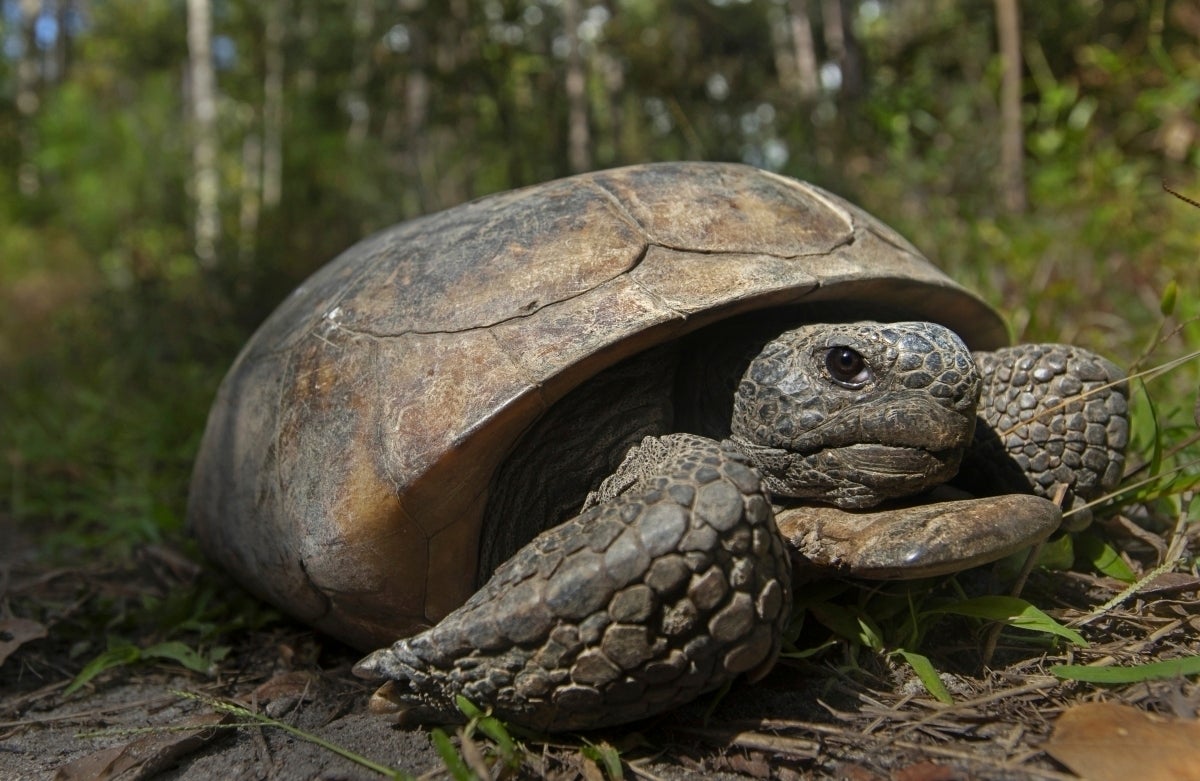Regulators, landowners form habitat protection partnership
The Biden administration and groups representing the forest products industry have reached a deal to promote logging practices intended to protect imperiled species on private lands

The Biden administration and industry groups pledged Thursday to promote logging practices and research intended to protect imperiled species on private forest lands.
The U.S. Fish and Wildlife Service and two forest products organizations signed a memorandum promising cooperation on projects that could boost struggling populations of pollinating insects, birds, fish and mammals.
“It underscores the importance of the contributions private forest owners make to wildlife and natural resource conservation,” service Director Martha Williams said, describing the arrangement as “a model for voluntary collaboration.”
It was among several initiatives President Joe Biden announced this week to prevent loss of wildlife habitat — a leading cause of population drop-offs, according to a 2019 United Nations report that said around 1 million plant and animal species worldwide were threatened with extinction.
The agreement between the government, the National Alliance of Forest Owners and the National Council for Air and Stream Improvement aims to halt a “historical pattern of costly litigation and counterproductive conflict” between industry and regulators, said Eric Breitling, spokesman for the alliance.
It comes after the Fish and Wildlife Service proposed a rule in February that would encourage voluntary conservation projects on private land, partly by shielding owners from punishment if their actions kill or harm small numbers of imperiled species.
The memorandum formally recognizes the Wildlife Conservation Initiative, a partnership with 14 research projects underway around the U.S. They focus on species including the red tree vole in the Pacific Northwest, the Western pond turtle in the Southwest, the wood turtle in the Midwest and a variety of Eastern butterflies and migratory birds.
A primary goal is cutting and planting trees in ways that enable landowners to make money yet prevent further harm to wildlife that could lead the service to designate them as threatened or endangered, said Dave Tenny, president of the forest alliance.
Its nearly 50 member companies own and manage more than 46 million acres (18.6 million hectares) of forest land.
One example of how the partnership can succeed, Tenny said, is the gopher tortoise. The Fish and Wildlife Service decided last year not to place populations of the burrowing reptile in four Southern states on the endangered list. The service credited conservation work with helping make the action unnecessary.
Landowners with the forest alliance had invited agency experts to explore areas where the tortoises live and recommend practices such as opening canopy spaces so sunlight could reach the ground and promote growth of vegetation they need, Tenny said.
“A lot of times, the Fish and Wildlife Service doesn't know what's happening on private land," he said. “Just allowing them to come in ... is a huge start by itself.”
Two environmental groups — the Center for Biological Diversity and Nokuse Education — said Wednesday they would sue the government over the decision not to list the tortoise.
They said protections for the tortoise in Florida, Georgia, South Carolina and eastern Alabama were inadequate. The tortoises have lost 97% of the longleaf pine savannas where they lived for millions of years in the South. They are listed as endangered in parts of Louisiana, Mississippi and western Alabama.
“Without lifesaving Endangered Species Act protection for our gopher tortoises, urban sprawl will keep driving them ever closer to extinction,” said attorney Elise Bennett, the center’s Florida director.
———
Follow John Flesher on Twitter: @JohnFlesher
——-
Associated Press climate and environmental coverage receives support from several private foundations. See more about AP’s climate initiative here. The AP is solely responsible for all content.
Bookmark popover
Removed from bookmarks